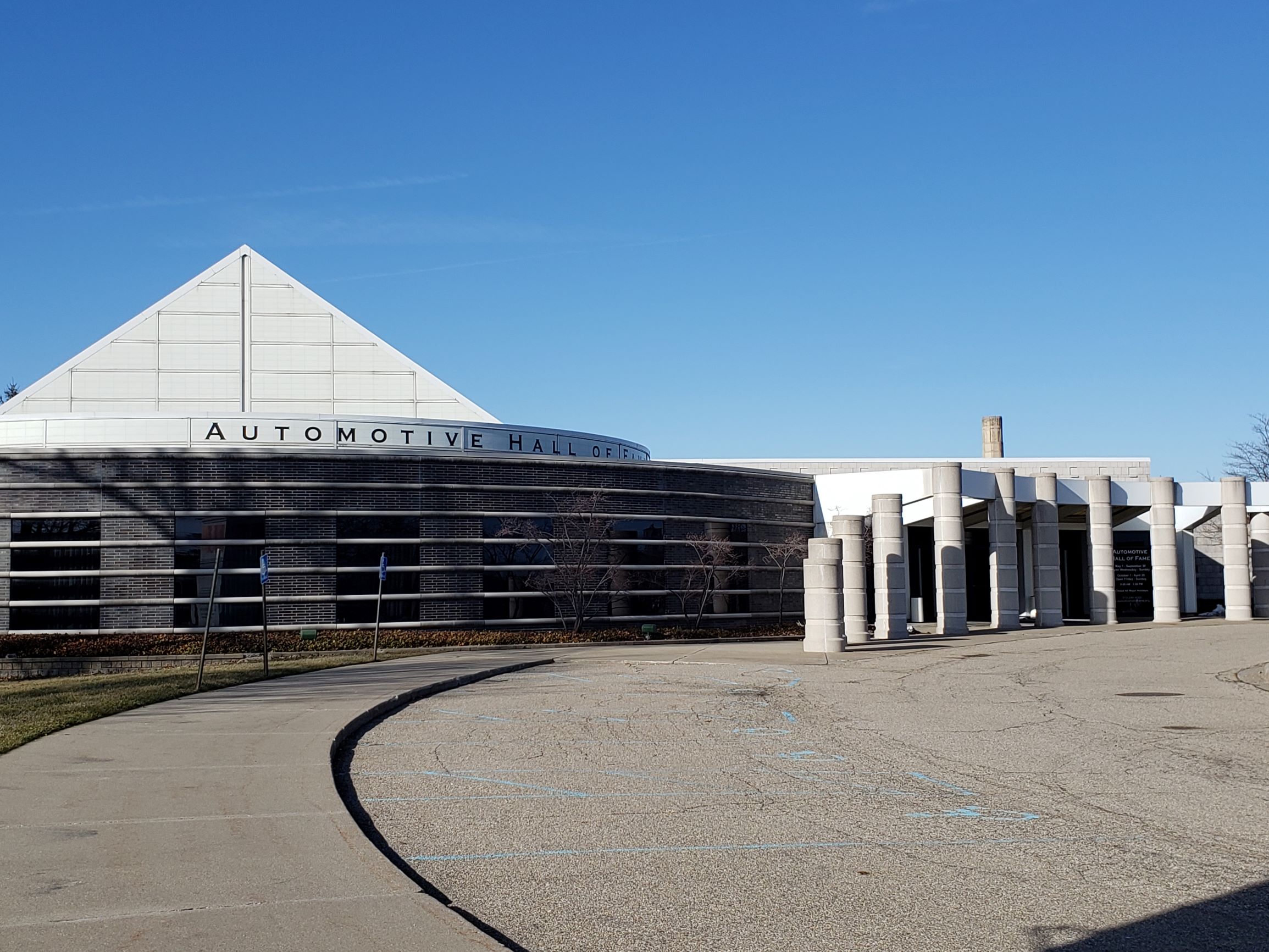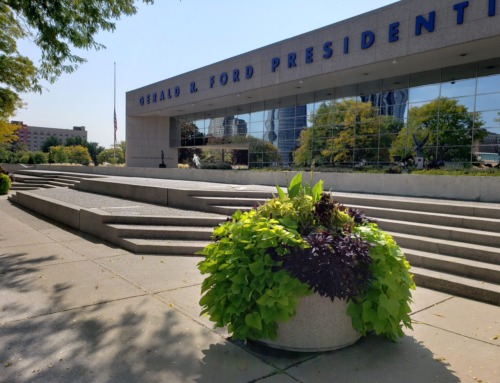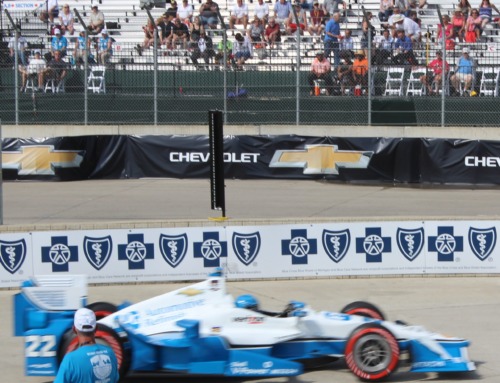Michigan has long been known as the automotive state. With innovators like Henry Ford and Ransom Olds, we are known around the world for our automobile manufacturing. One of the lesser-known entrepreneurs that played a role in Michigan’s automotive history is an interesting man by the name of Charles Brady King. He was the first person to publicly drive on a Michigan street, months before Henry Ford even built his automobile. Charles also made and sold the first complete automobile in Detroit. He was an American engineer and entrepreneur, automotive pioneer, artist, etcher, flutist, poet, architect, mystic, industrialist and inventor. Charles was also a mentor to other inventors, including Henry Ford, Ransom Olds, Jonathan Maxwell and Henry Joy.
Charles was not a native Michigander. He was born on February 2, 1868, at Camp Reynolds on Angel Island, California. His father had been a Civil War Union Army general, General John Haskell King, and his mother was Matilda C. Davenport, from the New England family line of Davenports that settled in Detroit.
From an early age, Charles showed an aptitude for education. He attended Trinity College in Port Hope, Ontario for two years, then went to Cascadilla School in Ithaca, New York. In 1887 he entered the prestigious Cornell University in New York, where he received training in engineering, but was only there for two years. He had to leave the school due his father’s death and moved to Detroit around 1888 at the age of 20 to help his family. Here he got his first full-time job as a draftsman at Michigan Car Company in Detroit, well-known for manufacturing railroad cars. The young man was full of ideas and ready to work on them.
At the time of the Chicago World’s Fair in 1893, Charles worked for the Russel Wheel and Foundry Company. He traveled to the exposition to display two of his new inventions, a pneumatic hammer and a brake beam for railroad cars. He was put in charge of his employers’ exhibit in the Transportation Building. He not only showed his inventions, but he also took the opportunity to learn about the latest engineering feats. His pneumatic hammer invention (for riveting and caulking) was unique, being the only tool of its kind there, and earned him the exposition’s highest award of a special diploma certificate and a bronze medal.
While at the World’s Fair, Charles also observed Gottlieb Daimler’s self-propelled carriage. Inspired by this innovation, Charles decided to build a horseless carriage of his own. He saw that there were many manufacturers who had already built similar vehicles, including Charles and Frank Duryea. The brothers from New England had already built and tested an automobile, as had Carl Benz, who had patented the first gasoline automobile in Germany. Charles began to work on his own horseless vehicle and his excitement was contagious. His goal was to run his motocycle (horseless carriage) in America’s first automobile race on Thanksgiving Day in 1895. Unfortunately, his vehicle wasn’t quite ready for the race, and like more than 70 other potential entrants to the event he was forced to drop out of the race. He was still involved, however, serving as an umpire during the race in the car driven by Oscar Mueller. When Mueller collapsed from exposure near the end of the race, Charles took over as the driver. Other than the winning vehicle, Duryea, Mueller’s was the only other vehicle to complete the entire course of the race. Around this time, Charles organized the American Motor League to promote better roads.
Three years after the World’s Fair, Charles was ready, so he test drove his first automobile in Detroit on the evening of March 6, 1896. Hundreds of spectators turned out to watch, including Henry Ford, who reportedly followed Charles on his bicycle. Charles’ automobile, which was powered by a Sintz engine, reached up to seven miles per hour. He caused a great deal of excitement and people crowded around the car so that his progress was impeded, so much so that a police officer threatened to ticket him for disturbing the peace.
The event was well-documented by the Detroit Journal. They reported that Charles King started from a building on St. Antoine Street and went south toward the Detroit River. When he arrived at Jefferson Avenue he turned right. After passing by several businesses he arrived at Woodward Avenue and turned right again onto that street. He again passed by several businesses and then stopped for a short time near Cadillac Square at the Russell House hotel. In his post-drive interview with the Journal, he said “I am convinced that, in time, the horseless carriage will supersede the horse.” Very insightful words, indeed.
Charles continued to help his fellow inventors and entrepreneurs. He provided parts, instructions and assistance to Henry Ford for his first horseless carriage and gave Ford two valves from one of his engines during retrofitting so that Ford could build his first car, the Quadricycle, in 1896. In 1897, Charles joined with partners H. Joy and John and Truman Newberry to build marine engines.
The Spanish-American War halted his work and inventions. Charles enlisted in the military to do his part in 1898. He was a part of the Michigan Naval Reserve and served on the U.S.S. Yosemite as the Chief Petty Officer, Chief Machinist. He survived, and returned home to continue inventing.
In 1900, Charles joined the Olds Motor Works, but resigned after their plant burned down that same year. He then joined the Northern Manufacturing Company in 1902 and by 1903 became their chief engineer until 1908. One well known car he designed was a two-cylinder known as Silent Northern. This automobile was the first integrated motor and transmission assembly with the first side-step running boards. The 1907 Northern car model also had three-point engine suspension, air brakes, an air-controlled clutch and other innovations new to the auto industry of the time.
Charles left for Europe in 1908 to study automotive design. When he came back in 1910, full of new information, he started the King Motor Car Company and continued innovating. He was the first automaker to make cars with left-hand steering, and was the first to successfully make a practical working V-8 engine. The King automobile called, the Eight, was advertised as “The Car of No Regrets” and was the only vehicle to feature left-hand steering at the 1912 New York Auto Show. Charles left the King Automobile company in 1912, in order to devote his time to work on numerous other experiments and inventions. He continued to hold possession of his 40 automotive patents. The King name for the car company continued for many years and he produced up to 1000 automobiles under this name. The company was absorbed into the Studebaker Car Company in 1913 due to over-expansion and lack of capital.
In 1914, America was at war again, and Charles did his part. He directed the production of the King-Bugatti airplane engines as the Head of Aviation Engine Design. After the war, he once again returned to inventing and innovating. On January 26, 1925, he received a medal, bestowed by the National Chamber of Commerce, honoring him as “one of the main contributors to the mechanical development of the automobile.”
Charles was a founding member of the Automobile Old Timers in 1939, the original name of what was to become the Automotive Hall of Fame. He has many other inventions, including several machines, tools, mechanisms, attachments and sundry devices. Some of his more well-known patents include the jackhammer, a steam shovel, a lubricated pulley, multiple automobile transmissions, a car steering gear, and a spring suspension.
In 1946, Charles re-created his first drive at the Automotive Golden Jubilee held in Detroit. Among those also present were Edgar Apperson, Frank Duryea, Henry Ford, Charles Nash, Barney Oldfield, and Ransom Olds. It was a grand celebration.
On June 23, 1957, Charles Brady King died, leaving a legendary legacy of over 600 patents, 40 of them in the automotive category, and bequeathing a $500,000 antique and classic collection to The Henry Ford Museum.
Clearly, our lives today would be much different without the creations of Charles Brady King. Not only did he contribute to the automobile industry, but he was a well-rounded man with multiple talents. I believe I would have enjoyed hearing him play a tune on the flute or seeing some of his art on display.







Leave A Comment
You must be logged in to post a comment.